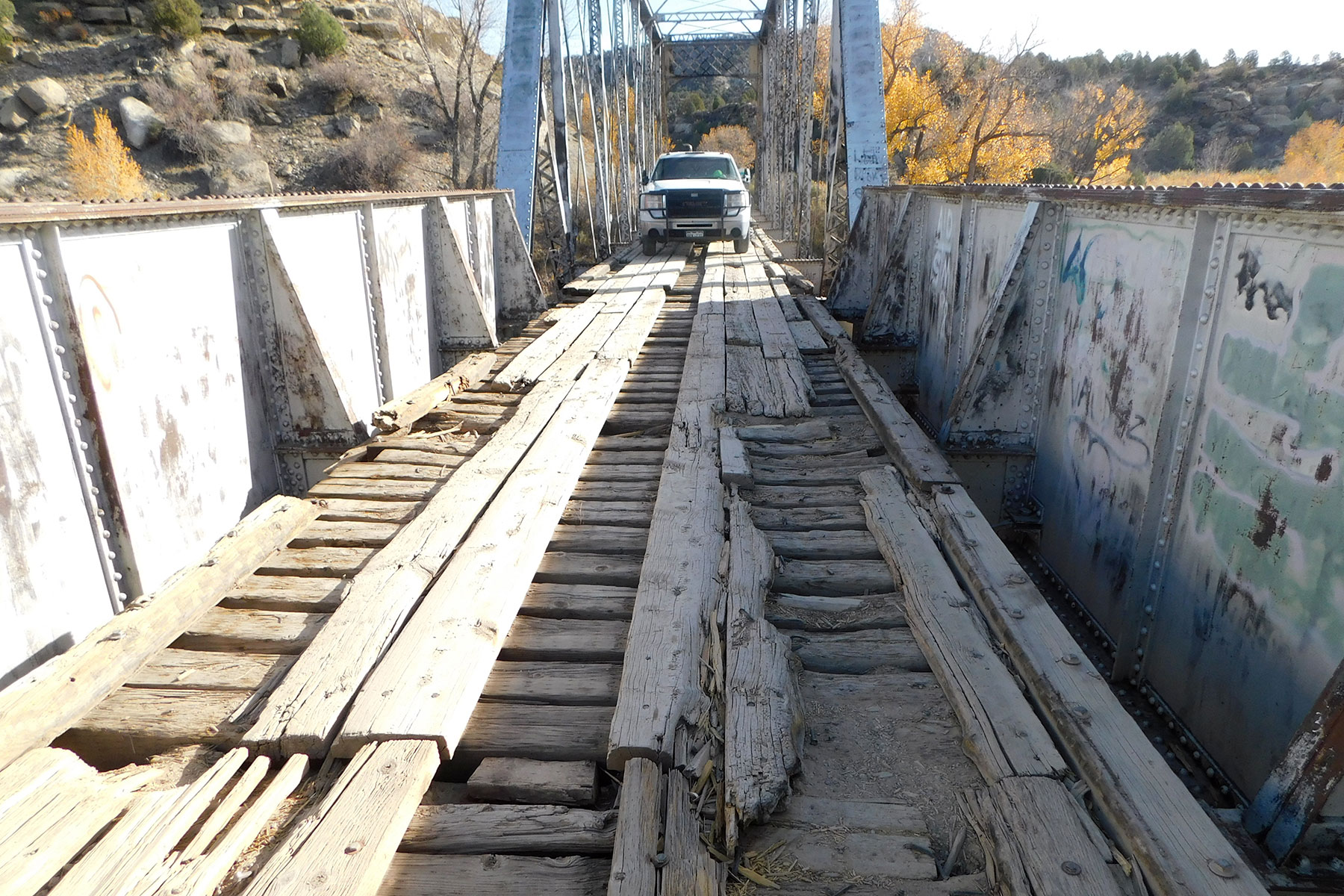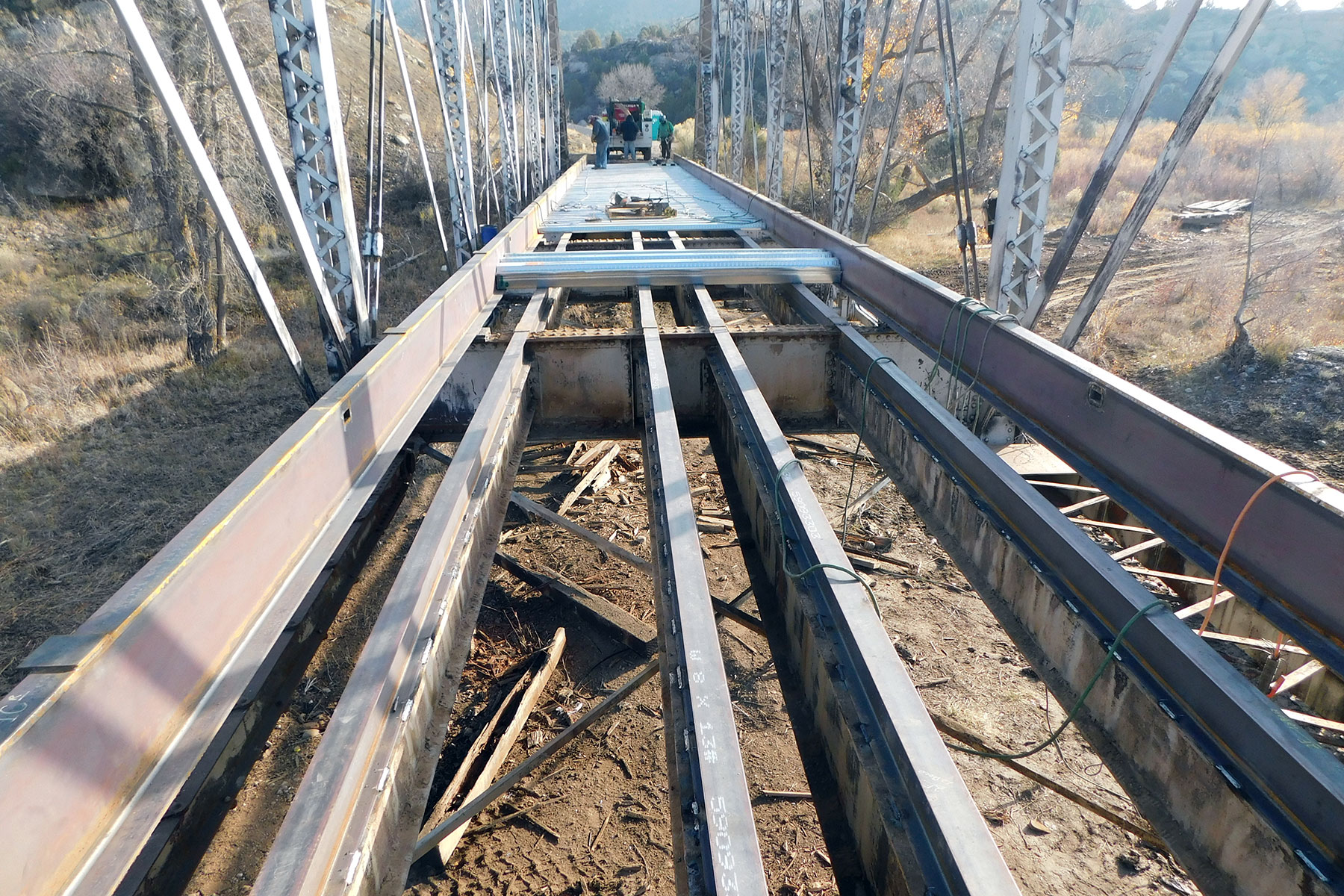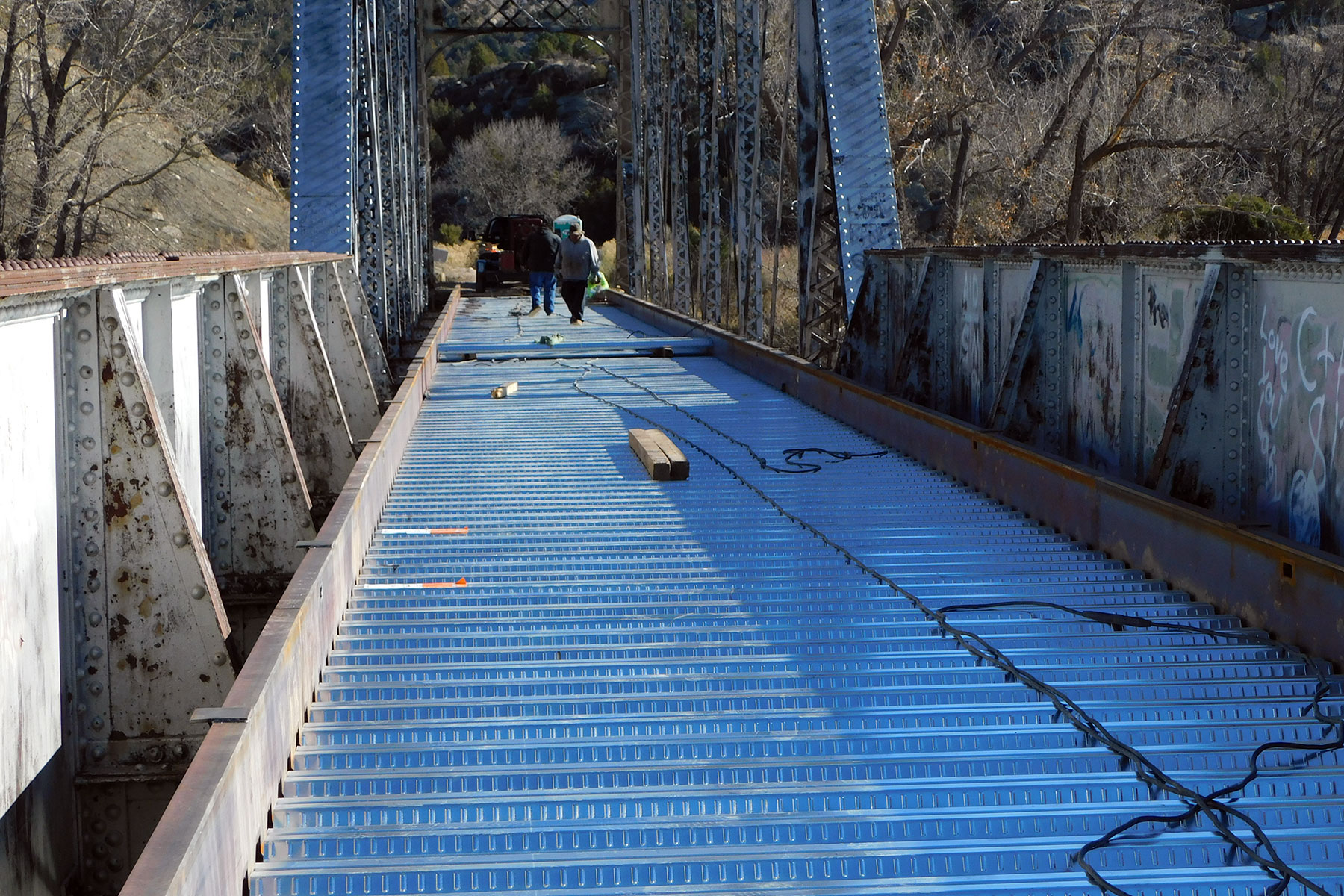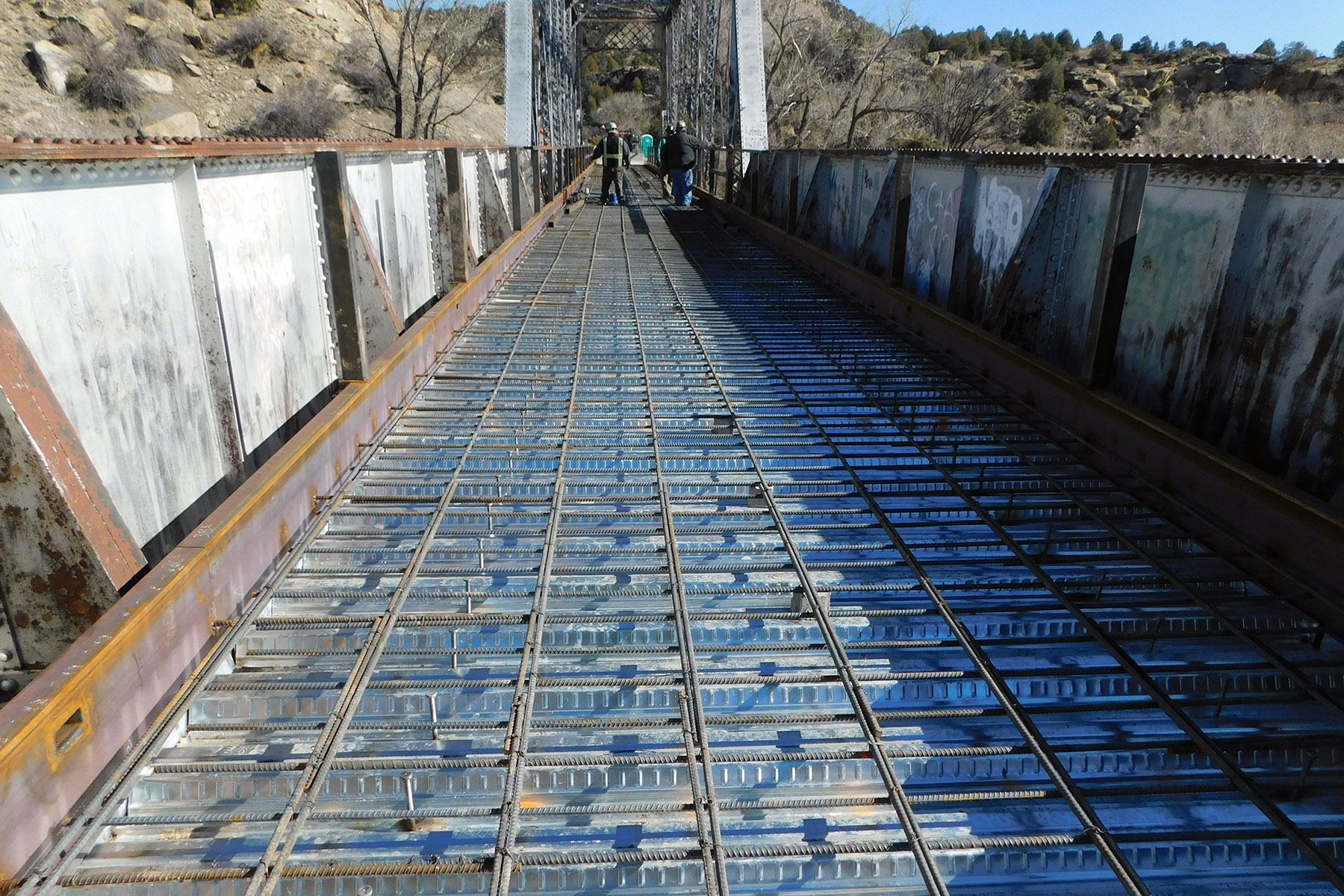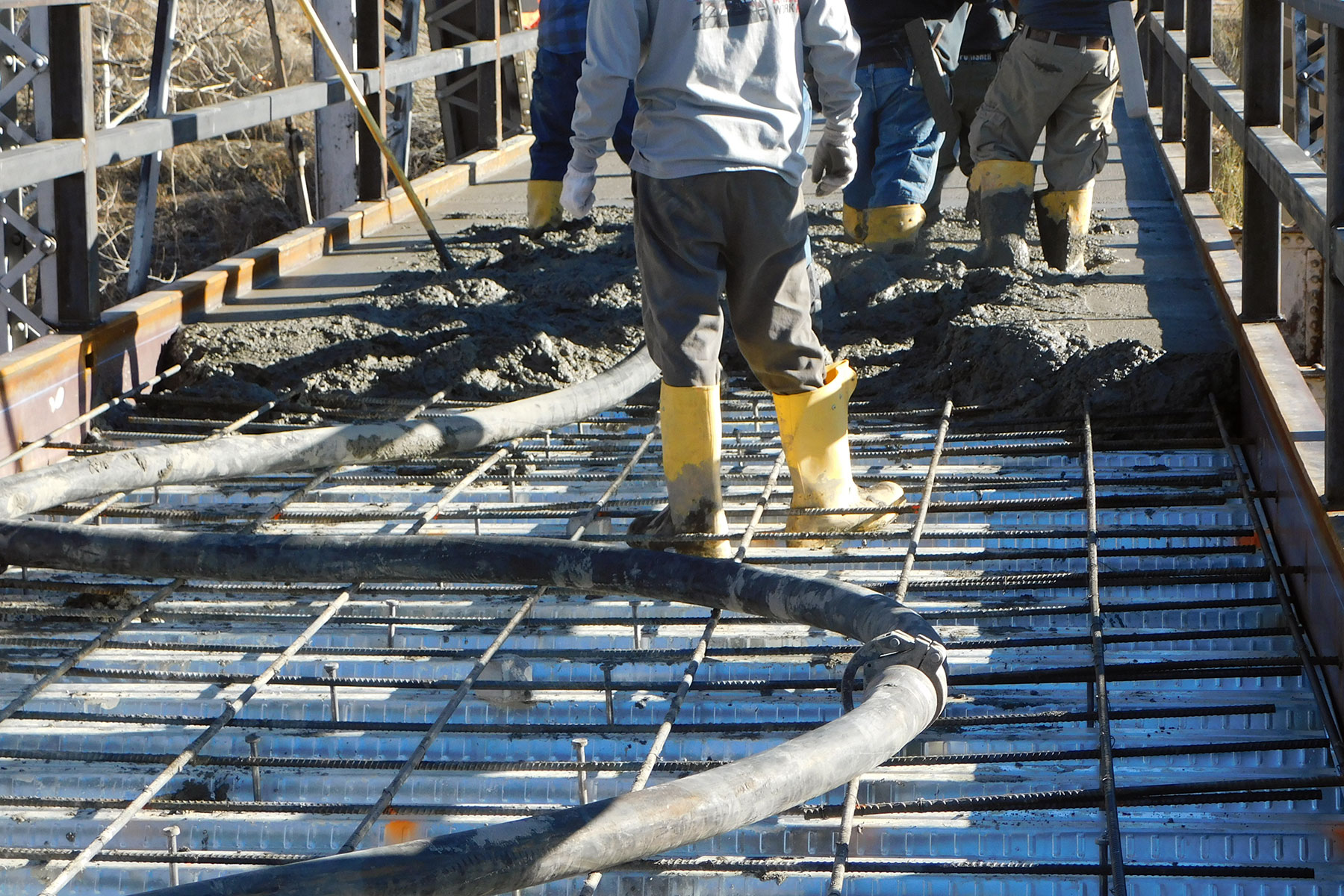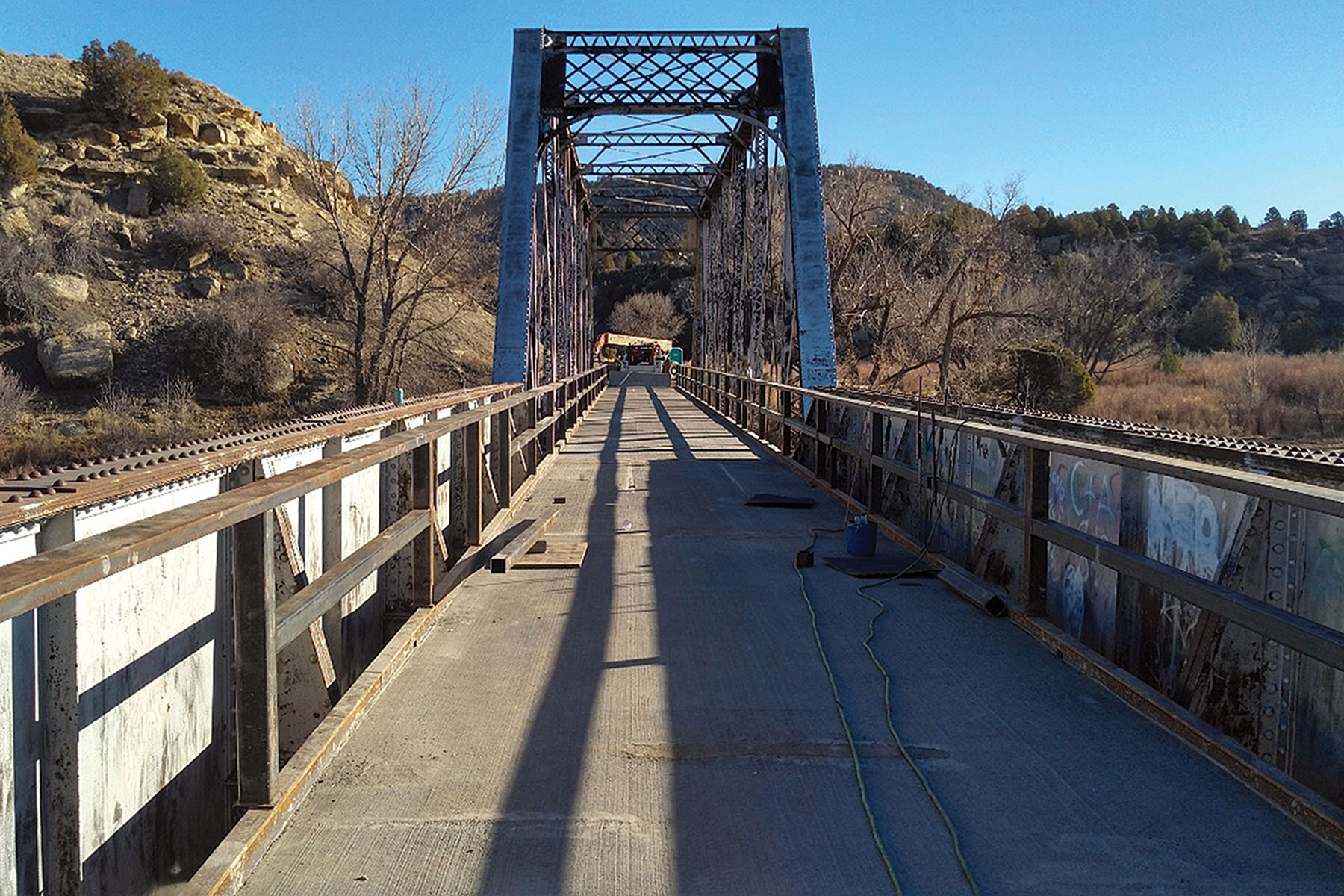Repairs began on the La Boca Denver & Rio Grande Trestle, or more commonly known to locals as the “La Boca Bridge,” on Oct. 22. The bridge is currently only one of two known steel bridges that exists in La Plata County on the original Denver & Rio Grande line.
The Southern Ute Indian Tribe’s Construction and Project Management department has been working to replace the aging boards that comprise the current bridge deck. For years the bridge was declared unsafe due to the rapid deterioration and weathering of the boards that make up the deck. The steel trestle itself, which provides the framework of the bridge, is in excellent shape overall.
“Tribal Council instructed us to replace the deck,” explained Interim Director of Construction and Project Management, Garry Fulks. “Three different options were discussed, and it was decided to do a ‘slab on deck.’” This option features a steel deck on the bottom and a slab of concrete on top to make up a new road. This option gives the bridge better integrity to hold vehicles on the bridge while also cutting the expense.
“The Southern Ute Indian Tribe felt there was a responsibility of giving an option of access,” said Fulks. “[The bridge] gives access to a cemetery where tribal members are buried, access for oil and gas workers, and access for tribal member recreation.”
Built in 1881, the La Boca bridge was a major crossing for the Denver & Rio Grande Railroad (D&RGR) over the Los Pinos river. According to Pioneers, Prospectors and Trout: A Historic Context for La Plata County, Colorado by Jill Seyfarth and Ruth Lambert, La Boca was one of the last stops to take on water, freight and passengers in Colorado before the train moved into Northern New Mexico. The La Boca Stop featured a section house, storage facilities, water tank for the D&RGR use as well as a small store and post office for the surrounding residents.
For those living in Ignacio, Arboles, Allison and La Boca during the early automobile era, the railroad was a vital lifeline for those traveling in the Southwest. The railroad was also an essential component in helping move supplies from Durango to Ignacio and into the less populated areas of Southern Colorado and Northern New Mexico.
If asked, many elders raised within the La Boca and Ignacio area will remember the distant rumble and whistle of the train pulling into the depots. The Ignacio Depot was established near where the current Southern Ute Utilities Division is located.
Southern Ute tribal elder Georgia McKinley is one member of the community who remembers the era of the railroad and its prevalence in the region.
“The railroad went right in front of my house,” described McKinley. “I remember the freight train would come in the night or very early in the morning. You would hear its whistle, and it was very scary at times.”
The railroad was one of the easiest ways to go into Ignacio during a time when accessibility was severely limited to horse and wagon or, for those who could afford it, an automobile. For McKinley it was a special treat to take the train.
“We would ride the train into Ignacio [from La Boca] for the Tribal Fair or during San Ignacio. We would ride back down to the depot and have to walk home,” explained McKinley. “If we needed groceries [or supplies] we would go by wagon [instead] and stay in Ignacio. We would leave by 3 p.m. and get home by dark.”
Many others that grew up in the time of the train and in the La Boca area would have similar experiences, like Southern Ute tribal elder Carol Olguin who was a young girl during the time she lived in La Boca and when the train was still in operation.
“We would go down by the tracks and pick currants [near the Los Pinos], and we would wave at the train as it passed by — going to Ignacio from La Boca,” Olguin said about her earliest experiences with the train. For Olguin, her experiences with the railroad were limited to her time at the Pagosa Junction school house near the Pagosa Junction Depot on the eastern side of the Southern Ute reservation, where she spent her time until the fourth grade.
“The boys would have to make sure there was coal in the shed for the train when it stopped [to gather supplies],” explained Olguin. Pagosa Junction is one of the last areas in the region where the original narrow-gauge tracks and remnants of the railroad can still be seen. A steel bridge similar to the La Boca trestle still stands there in a state of disrepair.
While the Pagosa Junction bridge is a ghost of its former glory, the La Boca Bridge continued to be in use even after the fall of the railroad. For most elders traveling around La Boca, the trestle was not often used as an access until after the railroad ceased operations entirely.
“We used to go down [to La Boca] and visit my mom’s friend,” stated McKinley. “We hardly ever used the bridge. We always crossed the river.”
Years later, Olguin would experience something similar. “We would go in the pickup and would cross the river. I would lie down in the pickup bed and watch the cotton woods as we crossed.”
If crossed during the railroad era, the bridge often posed a safety hazard as the train could be oncoming. The bridge was ultimately designed only for train access at that time. It was often easier and safer for families and individuals to cross over in the river to reach their destination via vehicle or wagon if the water was low.
For many years the train was a common sight in the region, but slowly the whistle and the echoes of the train began to die as the southwest moved into the modern reign of cars and the coming of the interstate.
According to an Ignacio Chieftain article dated Nov. 8, 1968, the railroad had begun to reach its end. In August 1968, there was a recommendation by an Interstate Common Commission examiner to abandon the line in its entirety from Antonito, Colo. to Farmington, N.M. as well as Silverton, Colo. to Chama, N.M. Denver and Rio Grande officials stated that the line was an “obsolete and misfit facility,” and argued for the railing to be dismantled and to cease all operation. A study was to be conducted to determine if the line could continue for commerce or tourism purposes. Ultimately, the line was abandoned around 1969 and the railways were pulled from the existing line, leaving only the Durango and Silverton route in operation as a tourist attraction.
Even without the railroad, the La Boca Bridge continued to stand with a new purpose — as an access bridge.
“Right now, we just use it to cross the river to go to the cemetery,” explained Olguin. “Where my mom and dad are buried.”
For those that currently live in the La Boca area, the current legacy builds on top of the foundation created by the railroad.
“It is a relic of the past,” says Olguin. “It was a memory of a past time when tribal members would visit other places and attend the ceremonies of Durango and Dulce. It was more than a means of transporting themselves.”
Now as the La Boca Denver & Rio Grande Trestle is being repaired, the bridge will continue to stand and provide for decades to come; specifically, for those needing access to homes, oil and gas wells, for recreation purposes or as a pilgrimage to pay respects to those in the La Boca Cemetery.
The La Boca Bridge is currently projected to reopen Nov. 30 with weather permitting.

